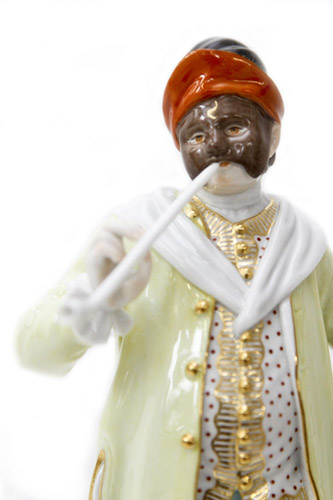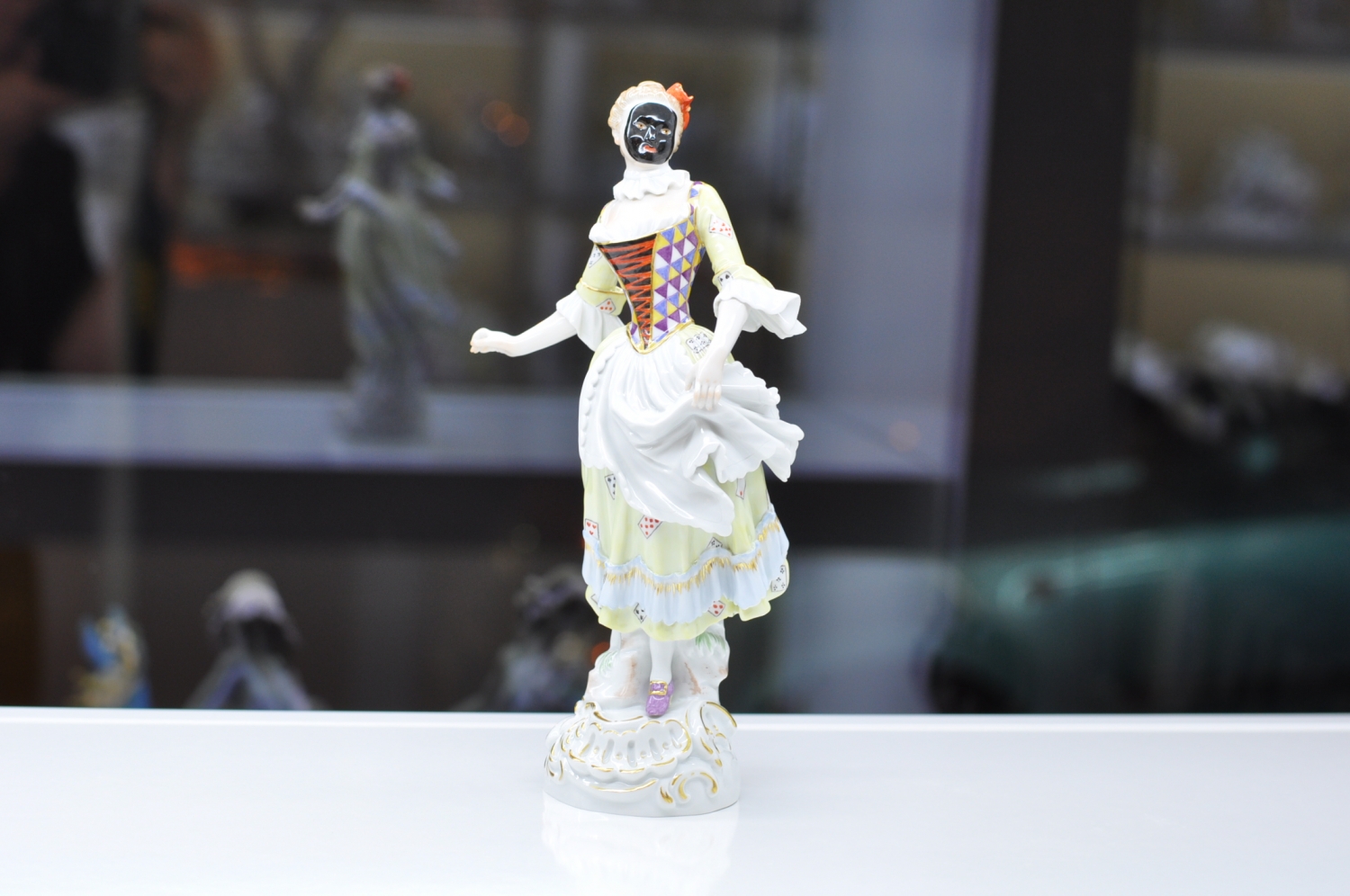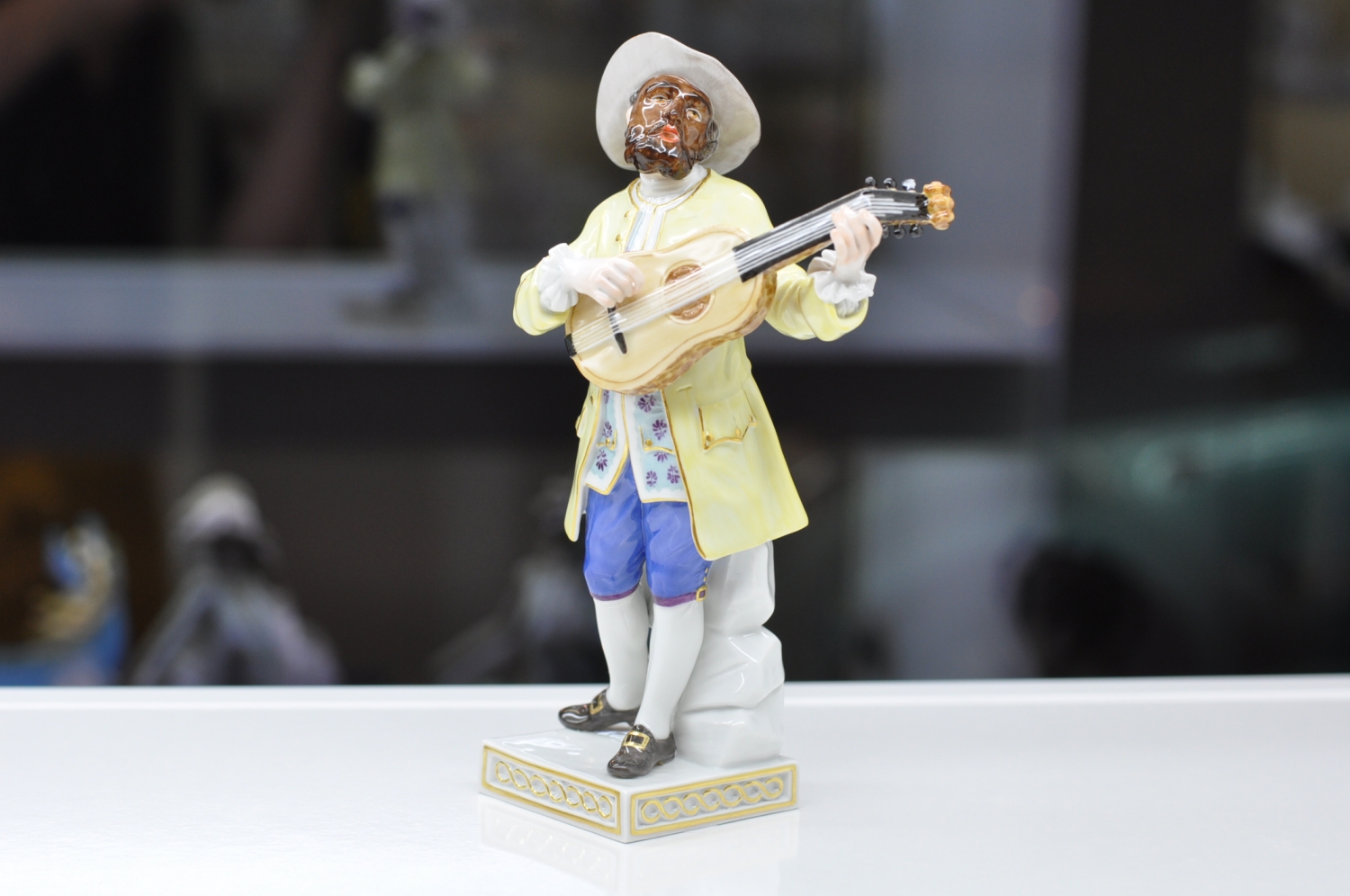«Commedia dellArte»
 Sculptors: Johann Joachim Kaendler (1706-1775) and Peter Reinecke (1711-1768)
Sculptors: Johann Joachim Kaendler (1706-1775) and Peter Reinecke (1711-1768)
Number of figures: 31
Height: from 15 to 22 cm
This collection is one of the most prominent ones of the Meissen manufacture. The six first figures were created as early as 1710-12 in red “Boetcher” porcelain. These were images of the following persons: Harlequin, Pulcinello, Brighella, Cantarina, Capitone and Pantalone. The originals of these works are now displayed in the museum at the Meissen manufacture.
The Italian Commedia dell’Arte is a traditional form of folkloric street theatre, which finds its roots in the city carnivals and street processions of Venice in the 10th century. This type of theatre is also called the “comedy of masks” as all actors, playing the roles of these short improvisations, wore typical masks. The theatre had a satirical orientation and became in some way the predecessor of the professional classical comedy theatre. The groups playing this masked comedy were the first professional theatre companies of Europe, where the foundations of the art of acting were laid. This theatre was considered improvised, because when the actors arrived in a new town, they first carefully studied its inhabitants, their way of life and interesting events, and only after that put their ideas back to life on the stage.
The masks personified permanent characters with their costumes and attributes. These masks were some kind of social images, based on typical features, and more than one hundred such characters existed. However, most of them were probably just variants of a small number of main masks. Very soon, this fashion of street theatres with its typical characters captured entire Europe. However, most of them were probably a few basic options masks. Very soon the fashion street theater with its typical characters captured the whole of Europe. These Italian groups started touring and performing in Russia in 1733. It became a popular thing in houses in Moscow and St Petersburg to organize Venetian carnivals with masks. When Pavel came to power in Russia in 1796, this type of amusement left the court life. It is remarkable that this happened at the same time as when the Commedia dell’Arte was in decline in Italy itself. A new wave of interest for the traditions of Italian street theatre came in the beginning of the 20th century, when a high number of painters, sculptors and other artists turned back to this theme.
The masks in the Commedia dell’Arte had a double meaning: first of all, it was an accessory to be used on the stage, but secondly, the mask expressed a certain social type with clearly established psychological traits and with a corresponding way of speaking. Once an actor chose a specific mask, he would never separate himself during his entire professional career.
The Commedia dell’Arte had two main centers: Venice and Napels. As a result there were two groups of masks. The main characters in the north (Venice) were the Doctor, Pantalone, Brighella and Harlequin; the main in the south (Napels) were Coviello, Pulcinella, Scaramuccia and Tartaglia.
In 1743-44, Johann Joachim Kaendler (1706-1775) and Peter Reinecke (1711-1768) were so much impressed by the grotesque masks and brightness of the costumes of the characters of the Commedia dell’Arte that they started creating the first models of the thematic collection, which took the same name. This collection continued the specific tradition of the famous Meissen manufacture.
In 1858 theatre historian Maurice Sand, son of the famous French writer Georges Sand, was personally acquainted with Wilhelm Romanus Andresen, one of the main sculptors at Meissen at that time, and gave him the gravures of the Commedia dell’Arte which he had in his possession.

The sculptor started working with the first figures of the collection and in the following years six other sculptors at the Meissen manufacture created the other figurines. For example, Julius Konrad Hentschel, who is famous for some other collections as well, created the figurine Fritellino. In 1900, the Meissen manufacture presented the 12 new figures at an international exhibition in Paris.
The figurines in masks shine in perfection and humor and the dynamics of their moves was transferred into sculptures by great artists, using bright colors and fine details. Treat yourself to the charm of the Italian Commedia dell’Arte, surprisingly accurately crafted by masters of their craft.
Buy figurines from the collection Commedia dell'Arte from our art-salon >>






